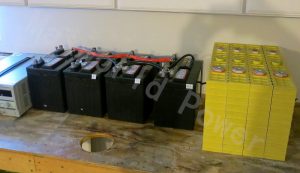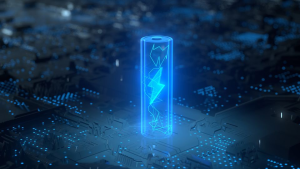How to choose better between LiFePO4 and ternary lithium batteries
Which is superior, a ternary lithium battery or a lithium iron phosphate battery? What distinguishes ternary batteries from LiFePO4 in particular? How can we choose wisely in order to obtain a better lithium battery since ternary and lithium iron phosphate are now the two popular materials available?
Actually, Ternary lithium and LiFePO4 batteries each have unique properties; there is no such thing as excellent or poor technology, only a fit or a fit not. Making the appropriate selections is the finest decision. Thus, between lithium ternary batteries and lithium fePO4 batteries, which is more appropriate?

LiFePO4 Battery
LiFePO4 is a common abbreviation for lithium iron phosphate batteries.
LiFePO4 battery, also known as a lithium-ion battery with a cathode made of lithium iron phosphate. The lack of precious metal components in this sort of battery distinguishes it. LiFePO4 batteries really perform better during cycles and have higher temperature resistance, higher safety stability, and lower costs. Given the low cost of raw materials and the abundance of phosphorus and iron in the earth’s natural resources, there won’t be any issues with their supply.
Benefits of LiFePO4 batteries
1. More user-safe.
LiFePO4 has good safety because the P-O bond in its crystal is stable and challenging to break down. This means that even at extreme temps or during overcharging, the structure won’t collapse, heat up, or produce potent oxidizing chemicals like lithium cobaltate. LiFePO4 batteries have undergone extensive safety testing, and even in the event of a collision, a puncture will not explode.
2. Very lengthy longevity.
A LiFePO4 battery may be charged and discharged at a normal rate of 100% for more than 2000 cycles. A lead-acid battery only lasts for one to one and a half years. While LiFePO4 batteries that operate under similar conditions have a cycle life of 7 to 8 years.
3. Greater tolerance to extreme temperatures.
When compared to lithium manganate and lithium cobalt, the LiFePO4 battery has a thermal peak range of 350°C to 500°C. a large operational temperature range (from -20 to -75 degrees Celsius), which is far more resistant to extreme temperatures.
4. More lightweight.
LiFePO4 batteries have the same capacity but take up just 2/3 the volume and 1/3 the weight of lead-acid batteries.
5.Favorable to the environment.
The LiFePO4 battery complies with European RoHS requirements and is a 100 percent green battery because it is pollution-free.
6. Rapid charging.
High-current With a starting current of up to 2C, a 1.5C charge in a particular charger can be fully charged in 40 minutes. Fast 2C charging and discharging.
The following are downsides of LiFePO4 batteries.
- The vibration density of the LiFePO4 cathode is modest; it normally falls between 0.8 and 1.3.
- Due to weak electrical conductivity, slow diffusion of lithium ions, and lengthy charging and discharging times, the actual capacity is limited.
- LiFePO4 batteries do not function particularly well at low temperatures.
Lithium ternary battery
The positive electrode of a ternary lithium battery is made of lithium nickel cobalt manganate ternary cathode, whereas the negative electrode is made of graphite. Ternary lithium batteries have very high voltage platforms, therefore they can store more energy in a given volume or weight than LiFePO4 can. Ternary lithium batteries have higher specific power and energy. In terms of high rate charging and low temperature resistance, the ternary lithium battery is also quite advantageous.
Ternary lithium battery benefits
- A platform for high voltage.
The specific capacity increases with platform voltage. The voltage platform of ternary material is substantially higher than LiFePO4 for the same volume, weight, and even capacity of the battery. Its voltage line can reach 4.2 volts, and its discharge platform can reach 3.6 or 3.7 volts.
- High vibrational density and energy density.
Disadvantages of ternary lithium batteries
- The safety is poor.
- Lackluster resistance to heat.
- Lackluster longevity.
- Ineffective high-power discharge.
- The element is poisonous, ternary lithium batteries have a high power charge and discharge after a rapid temperature increase, and oxygen is easily ignited at high temperatures.
The main market for LiFePO4 will be in the realm of energy storage.
For EV cars, ternary lithium batteries are preferable.Data centers, communication base stations, emergency power, solar street lighting, electric buses or autos, industrial and medical equipment, and more are just a few of the applications for LiFePO4 batteries.
The largest market for electric vehicles is in Beijing, China, where the maximum summer temperature is around 40°C and the average winter temperature is held at or even below -16°C. The low temperature performance of ternary lithium batteries is clearly appropriate for such a temperature range. While LiFePO4 batteries operate better at higher temperatures, they appear a touch underwhelming during the winter in Beijing.











